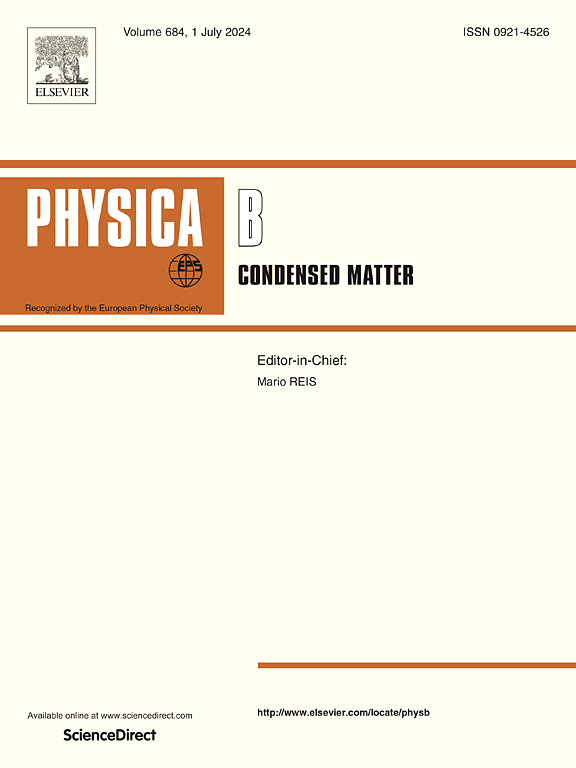Comprehensive analysis of the structural, electronic, elastic and optical properties of ternary chalcogenides pnictogens InPnCh3 (Pn = Bi, Sb; Ch = S, Se) compounds: First-Principles calculations
IF 2.8
3区 物理与天体物理
Q2 PHYSICS, CONDENSED MATTER
引用次数: 0
Abstract
This study employs density functional theory to investigate the structural, electronic, elastic, and optical properties of InPnCh3 chalcogenides (Pn = Sb, Bi; Ch = S, Se). These materials consist of elements that are abundant on Earth, non-toxic, and hold promise for applications in optoelectronics and energy conversion. All calculations are performed following optimization of calculation parameters and geometry using the Pnma (62) space group. Additionally, this study predicts the properties of InBiSe3, which has not yet been synthesized. Band structure and density of states (DOS) analyses reveal that these materials exhibit indirect band gaps. Among them, InSbSe3 exhibits the smallest band gap energy of 1.66 eV, while InBiS3 demonstrates the largest at 2.45 eV (HSE06). The anisotropic nature of these materials is reflected in their directional-dependent properties, with the highest elastic moduli values along the y-axis (Young's modulus E = 87 GPa for InBiS3). Furthermore, the optical properties of these chalcogenides, including absorption α(ω), dielectric function , refractive index , and loss function , are investigated. The results indicate that these materials are efficient absorbers of visible radiation, with an absorption coefficient ≈ 95000 cm−1 at 2.75 eV (450 nm) for InBiSe3.
求助全文
约1分钟内获得全文
求助全文
来源期刊

Physica B-condensed Matter
物理-物理:凝聚态物理
CiteScore
4.90
自引率
7.10%
发文量
703
审稿时长
44 days
期刊介绍:
Physica B: Condensed Matter comprises all condensed matter and material physics that involve theoretical, computational and experimental work.
Papers should contain further developments and a proper discussion on the physics of experimental or theoretical results in one of the following areas:
-Magnetism
-Materials physics
-Nanostructures and nanomaterials
-Optics and optical materials
-Quantum materials
-Semiconductors
-Strongly correlated systems
-Superconductivity
-Surfaces and interfaces
 求助内容:
求助内容: 应助结果提醒方式:
应助结果提醒方式:


